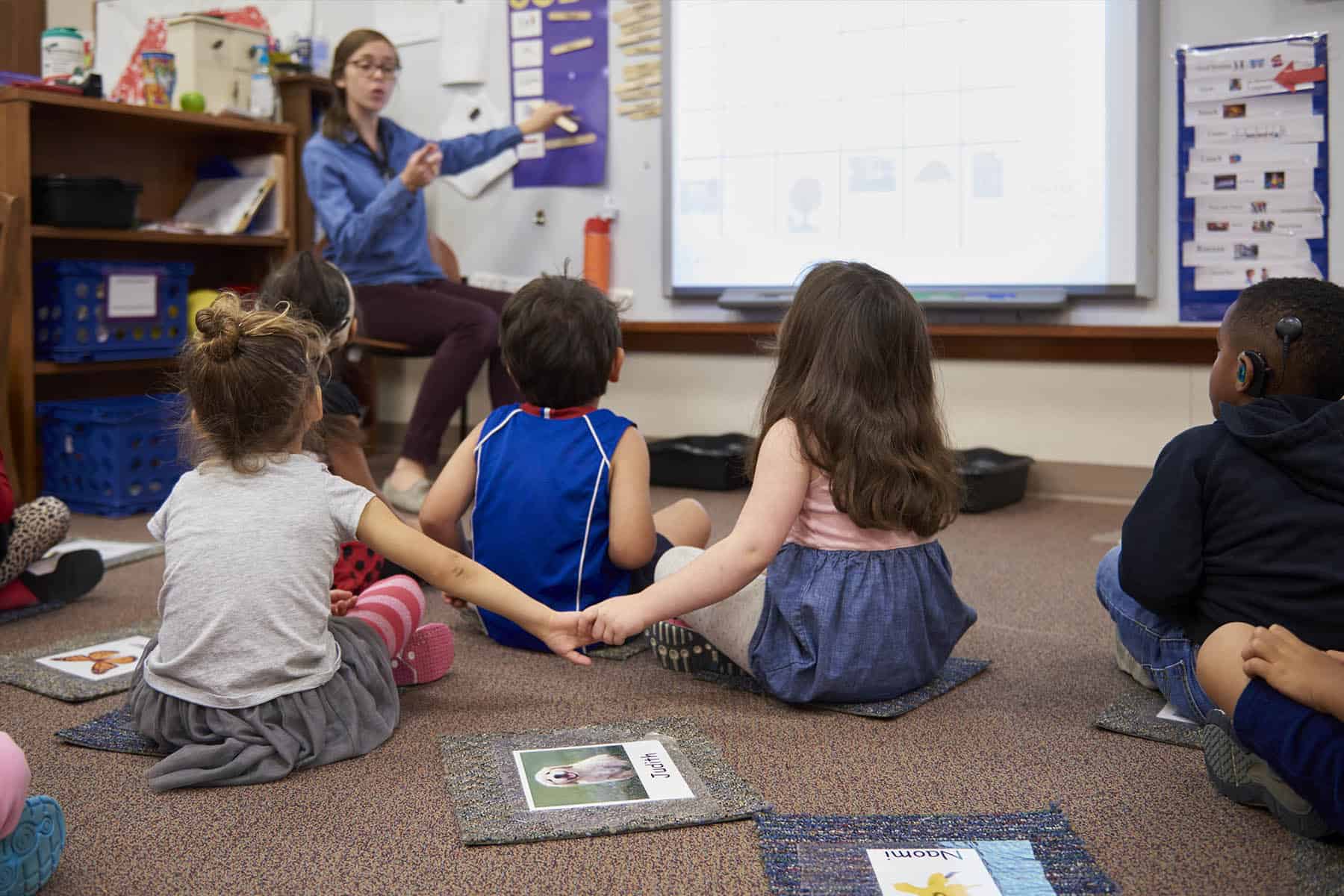The upcoming holiday season provides numerous opportunities to teach children about kindness. Spending time with family and friends, gift-giving and helping those in need are just a few ways to promote compassion in children. For children who are deaf and hard of hearing, these experiences provide wonderful opportunities to practice both the actions and the language of being kind.
At CID, teachers work year-round to teach and encourage caring and cooperation among students. This is done in a variety of ways, from discussing expectations of how to work together respectfully, to the explicit teaching of vocabulary and concepts centered around kindness. We asked CID teachers some ways that they create a classroom of kindness. Here are their favorite strategies:
- Have the class develop ‘rules of respect.’ These can be written for the classroom or created for a lesson (ex: How to behave respectfully during morning meeting). This type of language activity encourages students who are deaf and hard of hearing to use previously learned language and vocabulary to express their ideas while providing the teacher with information about the students’ facility with vocabulary and language associated with these concepts.
- During times of student conflict, acknowledge the student’s feelings while also providing them with the language to appropriately express their feelings (ex: Instead of saying, “You’re mean,” you could say, “I don’t like when you do that.”). Have the student repeat your words and discuss what they can do the next time there is a conflict.
- For a student who does not yet have the language to express their frustration and instead responds non-verbally (ex: hitting, screaming, taking items from others), model the appropriate language (ex: “I’m mad!” or “Please stop.”). As the student develops more language, expect them to imitate these words and eventually use them independently.
- Model thoughtful language throughout the day (ex: “Thank you for fixing the SMART board for me.” or “You can use the iPad first, and then it will be my turn, okay?”). Students who are deaf and hard of hearing need to hear explicit language models multiple times throughout the day before they can use them independently. Hearing compassionate words and phrases not only provides a model of language, but also conveys a tone of shared respect among teachers and students.
- Plan activities that provide repetition and practice with targeted vocabulary and language that is at the student’s level: focus on having the class use language to describe ways to fill someone’s bucket; role play situations; create a poster to mark times when students have filled someone else’s bucket; and have a group ‘celebration’ when the bucket is full.
Promoting kindness in the classroom, whether it be through modeling or direct instruction, creates a sense of community among classmates. More importantly, practicing kindness in the classroom will encourage students to engage respectfully in all aspects of their lives.

Amy Hudson is currently serving as the Coordinator of the Virginia J. Browning Primary School at CID – Central Institute for the Deaf. Ms. Hudson received her Master’s degree in Deaf and Hearing Sciences from Washington University. She has served as a teacher at various age-levels for 27 years, teaching children who are deaf and hard of hearing at CID and at Special School District of St. Louis County, where she was also a member of the Cochlear Implant Support Team for teachers, students and families. She has presented to various colleagues, parent groups and visitors throughout her professional career.












